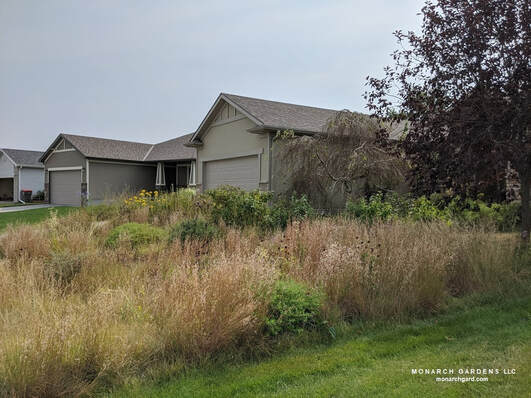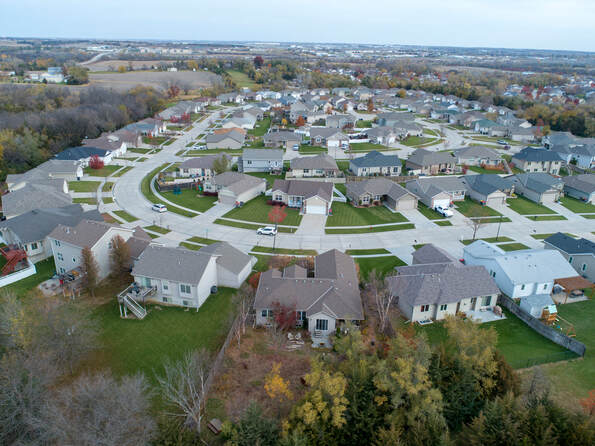Having backyard chickens won't save wild birds, just like having honey bees won't save wild bees or ecosystems.
Below are resources on the above subject so that you can become empowered and educate others. In the very least it's a list and a link you can give to people when the conversation turns deeper.
1) The Bee Apocalypse Was Never Real
Honey bees are not under threat of vanishing. Colony collapse disorder isn't what we think it is.
2) Competition Between Managed Honey Bee and Wild Bumble Bees Depends On Landscape Context
This one's behind a paywall, but you'll see links to other related articles down the page to broaden the discussion. From the abstract that explored two generalist groups (honey and bumble):
Honeybees might outcompete wild bees by depleting common resources, possibly more so in simplified landscapes where flower-rich habitats have been lost....Adding honeybees suppressed bumblebee densities in field borders and road verges in homogeneous landscapes whereas no such effect was detected in heterogeneous landscapes. The proportional abundance of bumblebee species with small foraging ranges was lower at honeybee sites than at control sites in heterogeneous landscape, whereas bumblebee communities in homogeneous landscapes were dominated by a single species with long foraging range irrespective of if honeybees were added or not.
3) An Overview of the Potential Impacts of Honey Bees to Native Bees, Plant Communities, & Ecosystems...
This is from the Xerces Society. Solid summary of all the issues that focuses on working with beekeepers for the best apiary placement.
4) Massively Introduced Managed Species & Their Consequences for Plant-Pollinator Interactions
From the abstract: First, we review the impacts of major insect and plant MIMS on natural comm-unities by identifying how they affect other species through competition (direct andapparent competition) or facilitation (attraction, spillover). Second, we show how MIMScan alter the structure of plant–pollinator networks. We specifically analysed the posi-tion ofA. melliferafrom 63 published plant–pollinator webs to illustrate that MIMS canoccupy a central position in the networks, leading to functional consequences. Finally,we present the features of MIMS in sensitive environments ranging from oceanicislands to protected areas, as a basis to discuss the impacts of MIMS in urban contextand agrosystems.
5) Bees Gone Wild: Feral Honey Bees Pose a Danger to Native Bees and the Ecosystems That Depend on Them
A professor of entomology looks at what happens when honey bees go rogue: "It’s these feral honeybees, especially, that pose a challenge to nearly all native pollinators since honeybees forage throughout the growing season for nectar and pollen from a wide array of flowers, building up vast numbers. When honeybee competition reduces the number and diversity of native pollinators, native plants also can suffer since they may receive less efficient pollination."
6) You're Worrying About the Wrong Bees
Another intro for those dipping their toes into the topic, complete with source material cited at the end.
7) Foreign Bees Monopolize Prized Resources in Biodiversity Hotspot
Here's a study that focuses on southern California -- as you may know, California is one of if not the richest state in native plant diversity. For this study keep in mind that many native bees have evolved to uses specific native plants for pollen to feed their young. "New research from the same team found that honey bees focus their foraging on the most abundantly flowering native plant species, where they often account for more than 90 percent of pollinators observed visiting flowers."
8) The Role of Honey Bees in Natural Areas
A recoreded video webinar with The Xerces Society and Pollinator Partnership. Non-native managed and feral honey bees negatively affect native plant communities by disrupting the co-evolved pollinator networks, and reducing seed set in native plants. They also preferentially forage on non-native plants (which they likely co-evolved with in countries of their origin) and thereby encourage invasiveness. Honey bee interference with native plant communities and their pollinators are found to therefore have compounding ecosystem effects.
9) Native Bees Increase Crop Production, Flowers Near Apiaries Carry More Bee Viruses
"One of the most important studies looked at 41 farms on six continents that grew almonds, blueberries, buckwheat, cherries, coffee, cotton, kiwi, mango, passionfruit, pumpkins, strawberries and watermelon. The results blew up the conventional wisdom. Wild insects increased fruiting in every single farm where they were present, but honeybees only produced a significant increase in fruiting 14% of the time. There wasn’t a single crop for which increased fruiting caused by honeybees outperformed that of wild bees. On average, wild bees delivered twice the bump of honeybees."
10) Focus on Native Bees, Not Honey Bees
Compelling summary by an ecologist on how native bees can engage the public's imagination -- and empathy -- even more so than honey bees, and how that will spur greater ecological awareness as we rewild urban and rural areas. Don't raise more turkeys to save birds = don't raise more honey bees to save pollinators.
11) Will Putting Honey Bees on Public Lands Threaten Native Bees?
This thorough and long piece puts into context the issues of honey bee agriculture and our dependence on them for pollination services, as well as the threats they may pose to some of our last wild places -- including threats to both native bees and plant communities. Here's a study on how honey bees displace native bees and reduce wildflower reproduction in wild areas.
12) Buzz Kill -- A Short Video
Native bees are at risk across the United States. “Buzz Kill” — winner of the 2020 Yale Environment 360 Video Contest — depicts the beauty and key ecological role played by these bees and shows how industrialized agriculture threatens endemic bee species.
13) Honey Bee Hives Decrease Wild Bee Abundance, Species Richness, and Fruit Count Regardless of Wildflower Strips
"Wild bee abundance decreased by 48%, species richness by 20%, and strawberry fruit count by 18% across all farms with honey bee hives regardless of wildflower strip presence, and winter squash fruit count was consistently lower on farms with wildflower strips with hives as well."
14) Beyond the Honey Bee: How Many Bee Species Does a Meadow Need?
"Our work shows that things that are rare in general, like infrequent visitors to a meadow, can still serve really important functions, like pollinating plants no one else pollinates." Less common bees visit plants other bees don't -- the more plants you have, the more bee species you need. These rarer bees provide critical pollination services and are also the most at risk of extinction due to habitat loss, climate disruption, etc.
15) Flowers Pollinated by Honey Bees Make Lower Quality Seed
"The researchers also found that honeybees visited about twice as many flowers on one plant before moving to the next than the average of other pollinators. That suggests the fewer, lower-quality seeds may arise because honeybees transfer more pollen between flowers of the same plant, resulting in more inbred seeds. Other pollinators more often flitted between different plants, probably transferring more diverse pollen.One potential consequence could be that native plant populations decline as subsequent generations become more inbred, reducing biodiversity. It would be illuminating to see how inbred plants fare after several generations, says Maria van Dyke, a pollinator ecologist at Cornell University."
16) Why Getting a Hive Won't Save the Bees
Wonderful PDF fact sheet by the Xerces Society that highlights about every scientific study on this post.




 RSS Feed
RSS Feed

